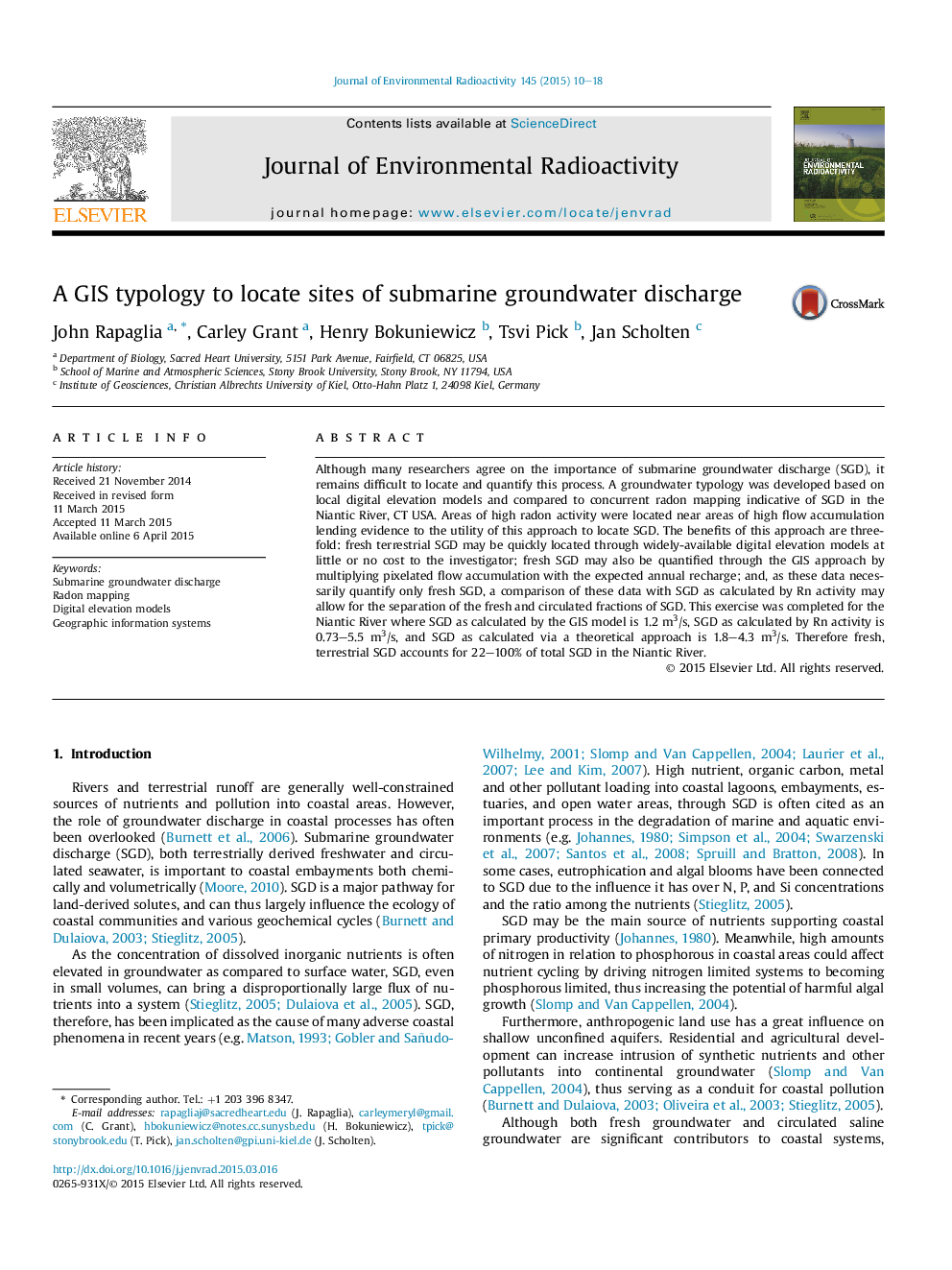| Article ID | Journal | Published Year | Pages | File Type |
|---|---|---|---|---|
| 1737867 | Journal of Environmental Radioactivity | 2015 | 9 Pages |
•Radon mapping of SGD was found to be in concert with expected areas of SGD based on a GIS analysis of flow accumulation.•SGD was calculated for the Niantic River, CT using both Rn activity and an analysis of flow accumulation.•Freshwater comprises 22–100% of total SGD in the Niantic River estuary, CT.
Although many researchers agree on the importance of submarine groundwater discharge (SGD), it remains difficult to locate and quantify this process. A groundwater typology was developed based on local digital elevation models and compared to concurrent radon mapping indicative of SGD in the Niantic River, CT USA. Areas of high radon activity were located near areas of high flow accumulation lending evidence to the utility of this approach to locate SGD. The benefits of this approach are three-fold: fresh terrestrial SGD may be quickly located through widely-available digital elevation models at little or no cost to the investigator; fresh SGD may also be quantified through the GIS approach by multiplying pixelated flow accumulation with the expected annual recharge; and, as these data necessarily quantify only fresh SGD, a comparison of these data with SGD as calculated by Rn activity may allow for the separation of the fresh and circulated fractions of SGD. This exercise was completed for the Niantic River where SGD as calculated by the GIS model is 1.2 m3/s, SGD as calculated by Rn activity is 0.73–5.5 m3/s, and SGD as calculated via a theoretical approach is 1.8–4.3 m3/s. Therefore fresh, terrestrial SGD accounts for 22–100% of total SGD in the Niantic River.
